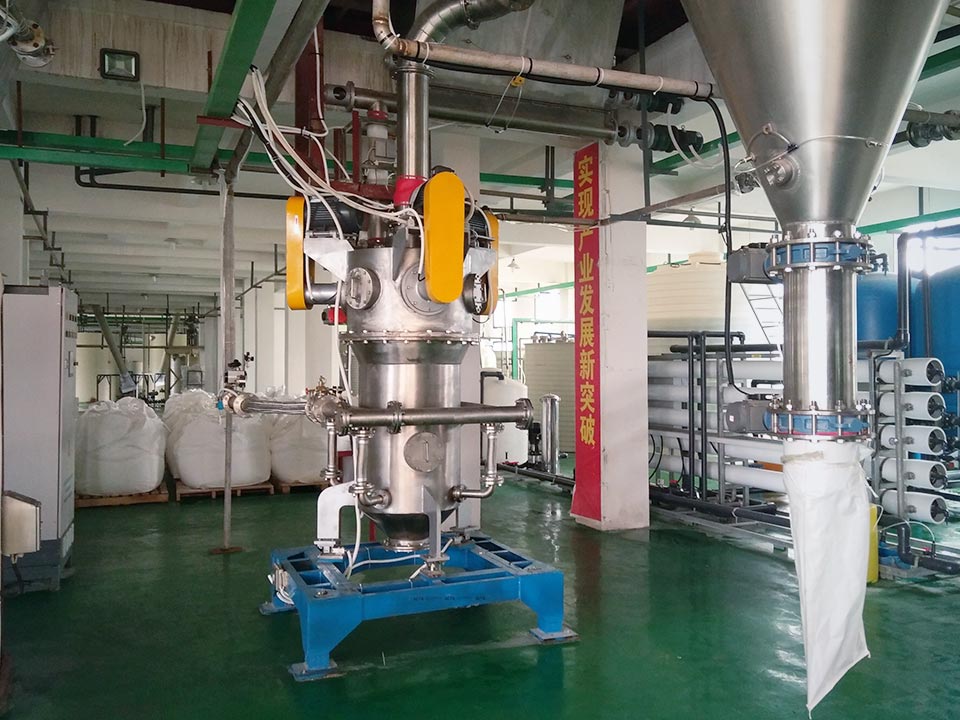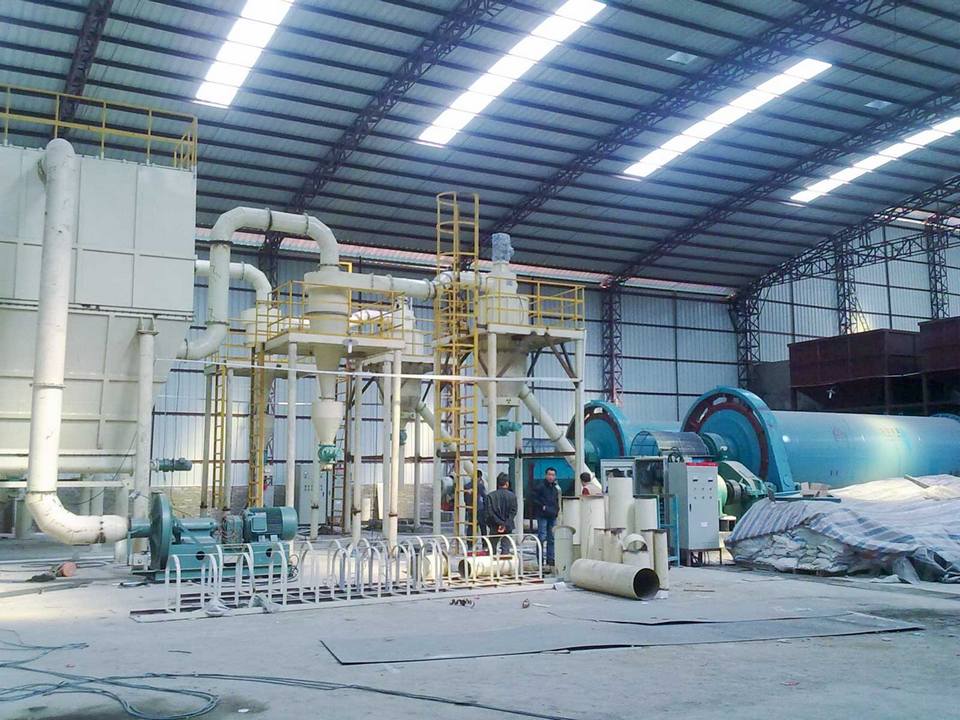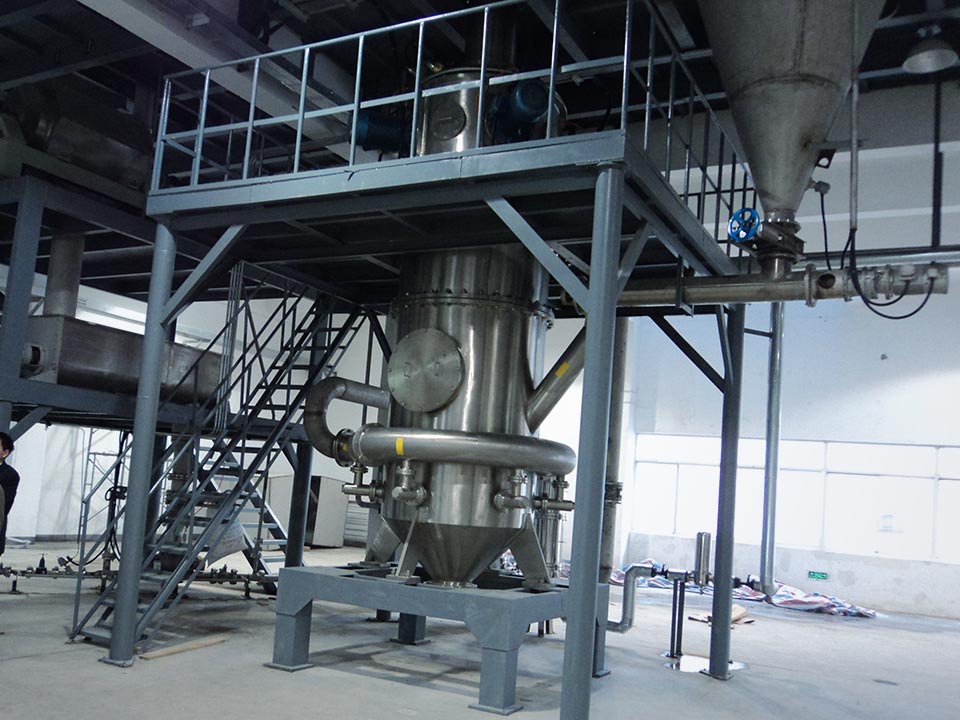How to improve the grinding efficiency of jet mill
In recent years, with the development of modern industry, ultra-fine and ultra-fine pulverization technology has received more and more attention, especially the quality of the pulverization effect of raw materials in the pharmaceutical and chemical industries directly affects the subsequent process. The jet mill is the best in the current ultrafine and ultrafine grinding equipment, especially the disc type (spiral) jet mill because of its simple structure, easy disassembly and assembly, and good grinding effect. It has won many pharmaceutical and chemical companies. Favored, it has become a typical equipment for grinding high-purity, low-fineness products.
Airflow grinder requires a complete process system. How to maximize its function and reduce loss is also a crucial issue.
The compressed air after filtering and drying of the airflow grinder brings the animal material to rub against each other, so as to achieve the grinding effect; in the process of the disc airflow grinder, 80% of the electric power consumption is in the air source part of the compressed air. Making full use of compressed air is actually saving electricity to the greatest extent. How to scientifically adjust the jet mill to run under ideal conditions to improve the efficiency of the jet mill is the concern of many user manufacturers.

- Adjustment of feeding speed
The feeding speed determines the time for the materials to collide and grind in the grinding chamber. The feed speed is slow, the material stays in the grinding cavity for a long time, the number of particle cycles is large, and the grinding degree is more sufficient, so the grinding fineness is smaller; but too slow, the number of particles in the grinding cavity is too small, resulting in fewer collisions , Thus failing to achieve the desired effect. If the feed is too fast, there will be too much material in the grinding chamber, and the grinding fineness will be more effective.
Experiments have proved that uniform and stable feeding can ensure the stability of the swirling flow field in the grinding cavity. Adjust the feeding speed to make the gas-solid ratio in the grinding cavity reach the ideal state, so that the material particles can get the maximum and effective collision times, thereby increasing the grinding machine s efficiency.
- Change the speed of the grading ring or the grading wheel
The grading ring of the disc jet mill is equipped with grading. It is not as convenient and simple to adjust as the fluidized bed (classified) jet mill. Different materials have different properties, and the same working conditions have different smashing effects. It does not reach agreement, and requires a lot of experimental experience to get it.
Due to the rotation of the grading wheel, the internal swirling flow field in the crushing chamber is stabilized, so that the material is fully crushed, and the coarser materials can never pass through the grading wheel and can only return to the crushing chamber to continue crushing. Under the action of high-speed airflow, a large pulverization efficiency is achieved, and the fluidized bed jet mill also has certain advantages.
- Reasonable design of grinding nozzle
The shape of the nozzle is the key to reducing the energy loss at the nozzle. The compressed air passing through nozzles of different shapes will produce airflows of different speeds. Improper nozzle design and processing will directly lead to the failure of the speed of the pulverizing airflow or the more serious nozzle wear. The worn nozzle will deflect the airflow, causing part of the airflow to do work ineffectively and affect the pulverization efficiency.
- Other factors
In addition, there are other factors that should not be underestimated. For example, the hardness of the material to be ground is too hard, and the grinding cavity of the grinder is more severely worn. At this time, we need to replace the ultra-hard lining, such as ceramic corundum, which greatly reduces The abrasion of small materials to the grinding chamber and improve the purity of the collected materials.
In addition, in the pharmaceutical and chemical industries, materials that are easy to stick to walls such as moisture absorption and static electricity are often exposed. The materials adhere to the grinding cavity, discharge port, and receiver, which affects the progress of the entire process. Then you need to replace the special anti-sticking lining in the crushing chamber, spraying or lining the anti-sticking coating and lining in the receiver; reduce the length of the pipeline and the contact area of materials as much as possible, and improve the collection rate of materials. Effective antistatic equipment is also needed to treat materials containing static electricity.
After careful adjustment and maintenance, tap the potential of the jet mill, and use the machine more efficiently under the condition of ensuring the particle size index, which is of great significance for saving energy and reducing costs.
Several Methods to Improve the Grinding Efficiency of Ball Mill
The low grinding efficiency of the ball mill, low processing capacity, high production energy consumption, and unstable product fineness are the problems that most concentrators will encounter. How to effectively improve the grinding efficiency of the ball mill is an important issue.

- Change the grindability of raw ore
The hardness, toughness, dissociation and structural defects of the original ore determine the difficulty of grinding. If the hardness is small, the ore is easy to grind, the wear of the mill liner and the steel ball is small, and the energy consumption is small; otherwise, the situation is just the opposite. The nature of the original ore directly affects the productivity of the factory.
In production, if it is difficult to grind ores or needs to be finely ground, if economic and on-site conditions permit, a new treatment process can be used to change the grindability of the ore:
One method is to add some chemicals in the grinding process to improve the grinding effect and improve the grinding efficiency.
Another method is to change the grindability of the ore, such as heating the minerals in the ore, changing the mechanical properties of the entire ore, and reducing the hardness.
- More crushing and less grinding to reduce the grinding particle size
If the grinding particle size is large, the mill needs to perform more work on the ore. In order to achieve the required grinding fineness, the workload of the ball mill is bound to increase, so energy consumption and power consumption will also increase.
In order to reduce the size of the grinding feed, it is required that the particle size of the pulverized product should be small, that is, "more pulverize and less grind". Moreover, the grinding efficiency is significantly higher than the grinding efficiency, and the grinding energy consumption is relatively low, about 12%-25% of the grinding energy consumption.
- Reasonable filling rate
When the speed of the ball mill is fixed and the filling rate is large, the steel ball will hit the material many times, the grinding area is large, the grinding effect is strong, but the power consumption is also large. The filling rate is high, which is easy to change the motion state of the steel ball and reduce the impact effect on the large particle material. On the contrary, the filling rate is too small, and the grinding effect is poor.
At present, many mines set the filling rate to 45%~50%, which is not necessarily strictly reasonable, because the actual conditions of each beneficiation plant are different. Copying the ball load data of others cannot achieve the ideal grinding effect. It should be determined according to the situation. .
- Reasonable ball size and proportion
Due to the point contact between the steel ball and the ore in the ball mill, if the diameter of the ball is too large, the crushing force is also great, causing the ore to break along the direction of the penetration force instead of along the interface. Crushing is not selective and cannot meet the purpose of grinding.
In addition, in the case of the same steel ball filling rate, the steel ball diameter is too large, resulting in too few steel balls, the possibility of crushing is low, the phenomenon of excessive crushing is aggravated, and the product particle size is uneven. Because the ball is too small, the crushing force on the ore is small, and the grinding efficiency is low. Therefore, the correct ball size and ratio have an important influence on the grinding efficiency.
What are the factors that affect the grinding efficiency of jet mills?
Jet mill is a kind of equipment that uses high-speed air flow energy (300~500m/s) or superheated steam (300~400℃) to make powders collide, collide, and rub against each other to make them grind. The nozzle sprays high-pressure air or high-pressure hot air, and then rapidly expands to form a high-speed airflow. Due to the large velocity gradient near the nozzle, most of the grinding occurs near the nozzle. The collision frequency between particles in the grinding chamber is much higher than the collision frequency between particles and the wall, that is, the main function of the jet mill is the collision between particles.

The control of the final particle size of the product by the jet mill mainly depends on the raw material particle size, crushing pressure, feeding pressure, feeding speed and other parameters. The logical relationship between the pneumatic grinding device and these parameters is specifically: the smaller the particle size of the raw material, the higher the grinding efficiency, on the contrary, the larger the particle size, the lower the grinding effect. When the grinding pressure and feed pressure are constant, reducing the feed rate will make the product finer, and increasing the feed rate will make the product coarser. When the feed rate is constant, increase the grinding pressure, the product size will become finer, and reduce the grinding pressure, the product will become coarser.
Therefore, particle size control is achieved by adjusting the parameters in the grinding process of the jet mill to achieve different pulverization finenesses. Before pulverization, the relationship between the feeding speed and pressure must be determined first, and then the appropriate pulverization parameters must be determined to meet different requirements. Granularity requirements.
The advantage of the jet mill is that it grinds no pollutants. After grinding, the compressed supersonic airflow speed decreases and the volume increases. It is an endothermic process and has a cooling effect on the material. It is especially suitable for ultrafine grinding. The jet mill uses supersonic airflow to accelerate the speed of particles, collide with each other or grind materials to achieve the grinding effect.
In order to increase the collision speed, a number of evenly distributed sub-nozzles are set around the main nozzle to accelerate the material particles around the main nozzle into the central area of the main stream. The feed nozzle is located in the center of the main nozzle, and the fluidized particles can be directly sucked into the center of the main nozzle to achieve a higher collision velocity.
At present, the jet milling equipment used in industry includes: flat plate, circulating tube, target type, convection type, fluidized bed type.
Influencing factors of the grinding effect of jet mill
Research results show that the grinding effect of the jet mill is affected by factors such as gas-solid ratio, feed particle size, working fluid temperature, and working fluid pressure.
- Gas-solid ratio
If the gas-solid ratio is too small, the gas flow energy will be insufficient, which will affect the fineness of the product; on the contrary, if the gas-solid ratio is too large, it will not only waste energy, but also deteriorate the dispersion performance of certain materials.
- Feed size
When grinding hard materials, the particle size requirements of the feed materials are also stricter. For titanium powder, the crushed calcined material should be controlled at 100~200 mesh; the surface treatment material grinding is generally 40~70 mesh, not more than 2~5 mesh.
- Working fluid temperature
At high temperatures, the gas flow rate in the working fluid increases. Take air as an example. The critical velocity at room temperature is 320m/s. When the temperature rises to 480℃, the critical velocity can be increased to 500m/s, and the kinetic energy is also increased by 150%. The effect is favorable.
- Pressure of work material
The working hydraulic pressure is the main parameter that produces the jet flow rate and affects the grinding fineness. Generally speaking, the higher the working pressure and the faster the working speed, the greater the kinetic energy, which mainly depends on the grindability and fineness requirements of the material.
- Grinding aids
During the grinding process of the jet mill, if a suitable grinding aid is added, not only the grinding efficiency can be improved, but also the dispersibility of the product in the medium can be improved.
